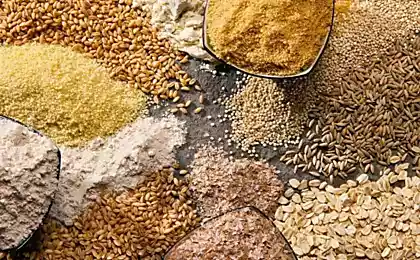648
This surprisingly common Kale — the benefits and likely harm

Chinese cabbage Bok-Choy
The usual cabbage — leafy vegetables, rich in phytonutrients and antioxidants. Its closest relatives in the cabbage family are Brussels sprout and cauliflower, Chinese cabbage Bok-Choy and trendy among connoisseurs of healthy food asparagus broccoli. Cabbage everyday, does not apply to exotic overseas viands and therefore rarely becomes a topic of detailed narratives. It can be found not only in salads followers of different diets, but also in fast food.

Savoy cabbage
But the resource Nutrition And You place this humble vegetable. It contains a variety of information about it and the benefits that it carries. However, we should not forget that even the most wholesome foods can cause individual intolerance, therefore, making diet diet should consult with a specialist dietitian, rather than relying on self-study of literature and the Internet.
Cabbage cabbage is a layer formed of leaves. The most common types — green, red and Savoy (perhaps saturated colors). These varieties are round spherical shape.

Cabbage NAPA
Chinese cabbage Bok-Choy characteristic elongated cylindrical shape and short leaves. It grows quickly. One Chinese grade — NAPA cabbage, has an oblong shape and tightly arranged crinkly, thick, light green with white veins leaves.
The benefits of cabbage for health cabbage with dark green leaves are incredibly nutritious. While it contains very little fat and calories — 100 grams of cabbage leaves contains only 25 calories.
Cabbage — a real storehouse of phytochemicals as thiocyanates, indole-3-carbinol, lutein, zeaxanthin, sulforaphane and isothiocyanates. These compounds are potent antioxidants and is known that help protect against cancer of the breast, colon and prostate. They also help to reduce blood levels of LDL ("bad cholesterol").
Cabbage is rich in natural antioxidant, vitamin C. 100 grams contain 36.6 milligrams of this vitamin, or 61% of the recommended daily allowance. Regular consumption of foods rich in vitamin C, promotes the body's resistance to infectious agents and scavenging, harmful, contributing to the pathogens, free radicals.
The antioxidant properties of the product are measured by the ORAC index (the"absorbing capacity of reactive oxygen", "oxygen radical absorbance capacity"). The cabbage, the average is 508 µmol TE/100 grams. From red cabbage — 2252 µmol TE/100 grams.
Cabbage is rich in important vitamins, including Pantothenic acid (vitamin B5), pyridoxine (vitamin B6) and thiamin (vitamin B1). These vitamins work in the body from external sources.
Cabbage contains a sufficient amount of minerals such as potassium, manganese, iron and magnesium. Potassium is an important component fluids of the cells and organism, helps control heart rate and blood pressure. Manganese is used by the body as a factor accompanying the enzyme-antioxidant called superoxide dismutase. Iron is essential in the formation of red blood cells.
Cabbage is a very good source of vitamin K and contains about 63% of the daily consumption of this vitamin. Vitamin K, supporting osteotropic activity, plays a role in bone metabolism. Thus, a sufficient amount of vitamin K in the diet promotes healthy bones. As it was discovered that vitamin K also plays a role in the treatment of Alzheimer's disease, limiting damage to the neurons of the brain damage.
Selecting and storing cabbage Cabbage is sold all year round. Give preference to fresh, not loose, firm to the touch, the cabbage heads of medium size, which is quite heavy for its size.
Pests often affect cabbage. Therefore cabbages can be treated with insecticidal sprays, preventing the lose of cabbage pests. Therefore, thoroughly rinse the cabbage under cold running water and then immerse the cabbage in salt water for about half an hour. This is necessary in order to wash away dirt, pests, their larvae and insecticide residues.
The maximum of useful properties are preserved in fresh cabbage. It should be placed in the refrigerator where it is stored for a few days.
The cabbage is cooking, Cut the stem, remove the outer layer of leaves, rinse in accordance with the recommendations listed above, and cut the cabbage into two halves. Then use cabbage leaves as prescribed in the recipe of the dish you intend to cook.
Thoroughly washed cabbages are eaten raw, as it is very nutritious.
Chopped cabbage leaves can be used in the preparation of vegetable salads.
Fresh or pickled cabbage leaves used to prepare a variety of rolls, including cabbage. These dishes are popular in Central Europe, the Balkans and Asia Minor.
In China and other countries in Southeast Asia popular dishes, which are prepared by mixing the cabbage, onion, garlic, capsicum and green chilli with steamed rice and soya, chilli or tomato sauce.
Cabbage is used in cooking various soups, including borscht and cabbage soup.
Not only good, but probable harm Sprouts can contain so-called "zabojnye products". These are some plant compounds, most often located in cruciferous vegetables such as cauliflower, broccoli and others that can cause swelling of the thyroid gland and which should be avoided by individuals who may have thyroid dysfunction.
Nutritional value of cabbage In parentheses are the percentage of the daily allowance. Nutritional value is based per 100 grams according to information from the Ministry of agriculture of the United States.
General information:
energy value — 25 calories (1%);
carbohydrates 5.8 grams (4%);
protein — 1.3 grams (2%);
fat — 0.1 gram (0.5 percent);
cholesterol — 0 milligrams (0%);
fiber, part of the food of 2.50 milligrams (6%).
Vitamins:
folate — 53 micrograms (13%);
nicotinic acid — 0,234 mg (1,5%);
Pantothenic acid — of 0.212 milligrams (4%);
pyridoxine (vitamin B6) — 0,124 mg (10%);
Riboflavin (vitamin B2) — 0,040 milligram (3%);
thiamine (vitamin B1) 0,061 milligram (5%);
vitamin a — 98 international units (IU, IU) is 3%;
vitamin C — 36.6 milligrams (61%);
vitamin K — 76 micrograms (63%).
Electrolytes:
sodium — 18 mg (1%);
potassium — 170 mg (3.5 per cent).
Minerals:
calcium 40 mg (4%);
iron — 0.47 mg (6%);
magnesium — 12 milligrams (3%);
manganese — 0,160 mg (7%);
phosphorus — 26 mg (3,5%);
zinc — 0.18 mg (1,5%).
Phytonutrients:
alpha-carotene (α-carotene) is 33 micrograms;
beta-carotene (ß-carotene), which is rich in carrots — 42 micrograms;
lutein-zeaxanthin — 30 micrograms.
What is your favorite dish with cabbage? Maybe you know the recipe a little-known dishes from this wonderful vegetable?
Source: hi-news.ru
The difference between the life after 50 from all previous life
Another floating solar power plant in Japan claims to be the largest in the world























